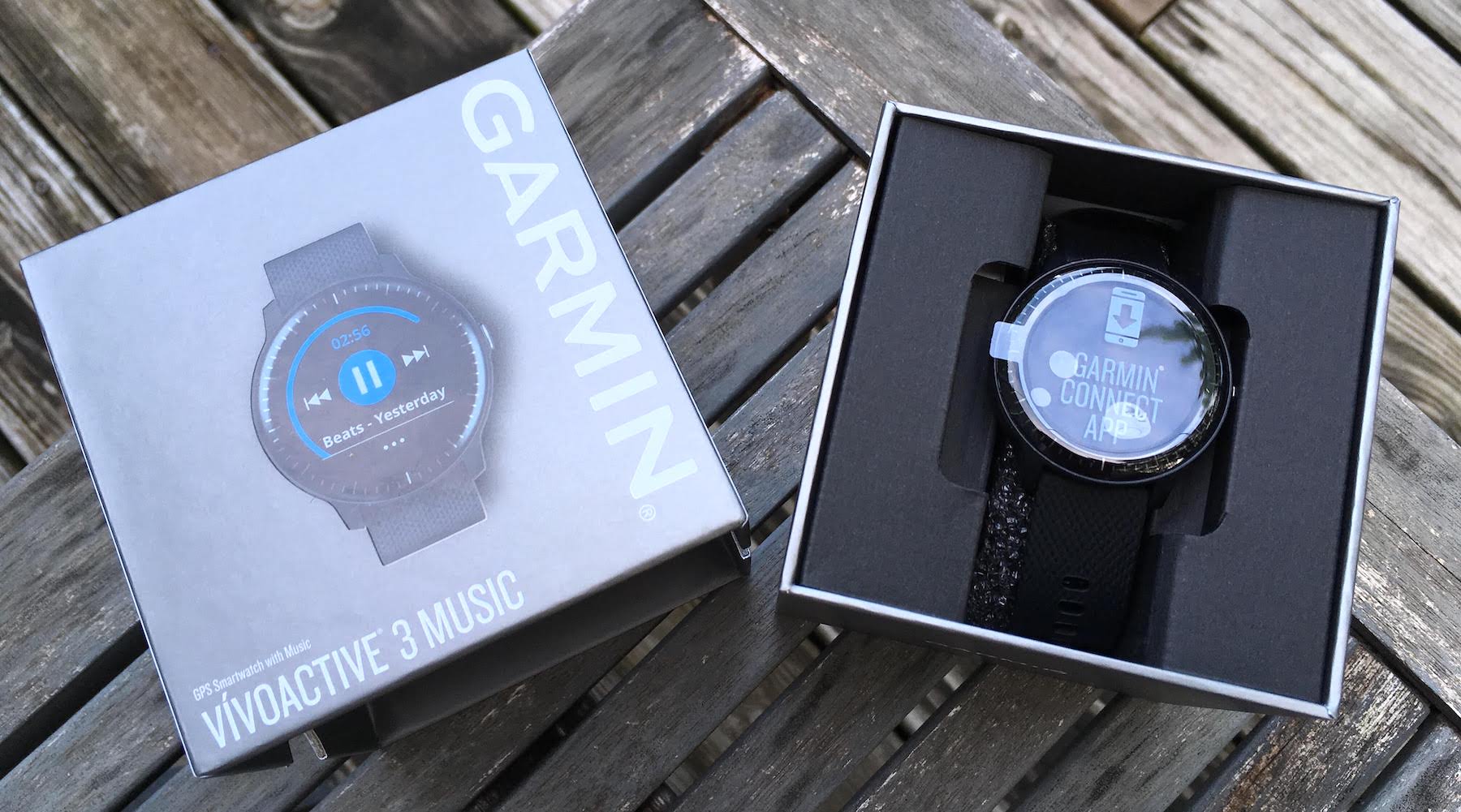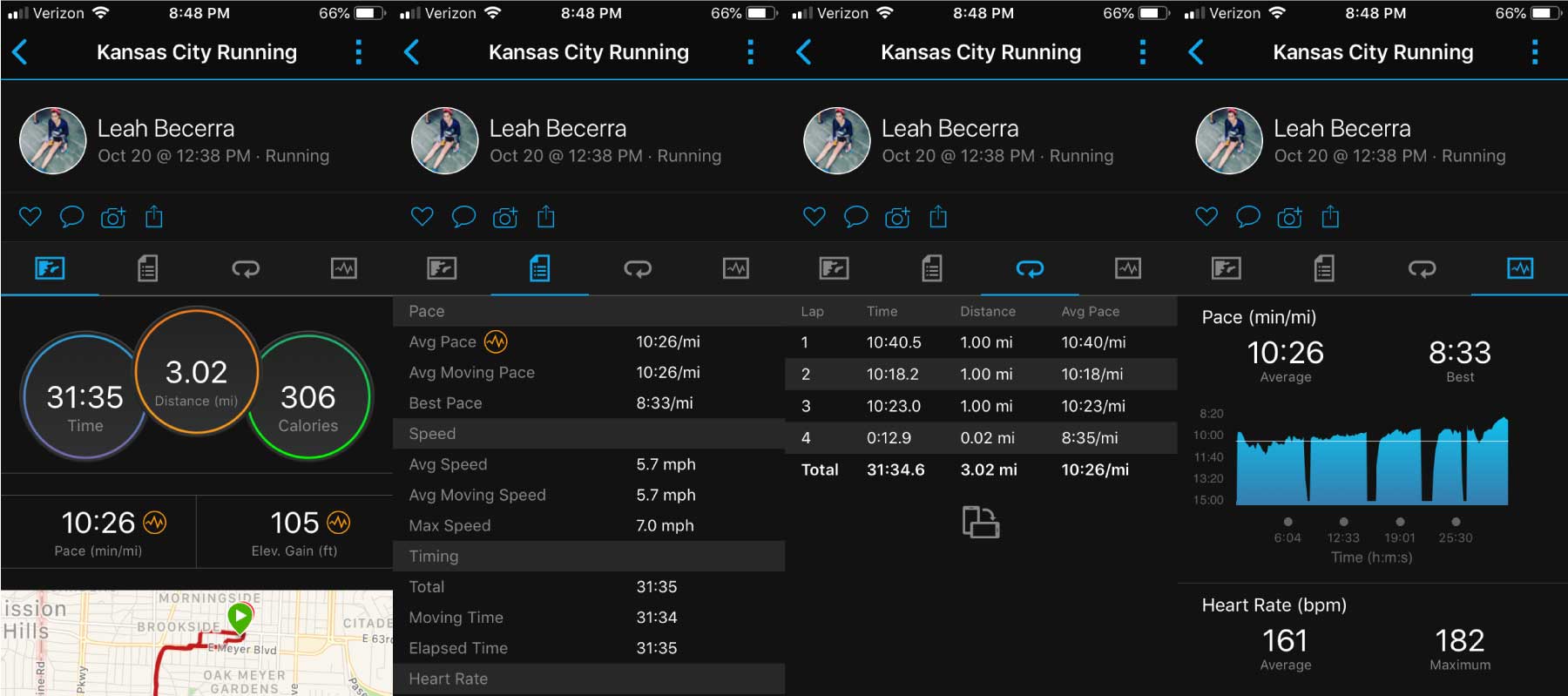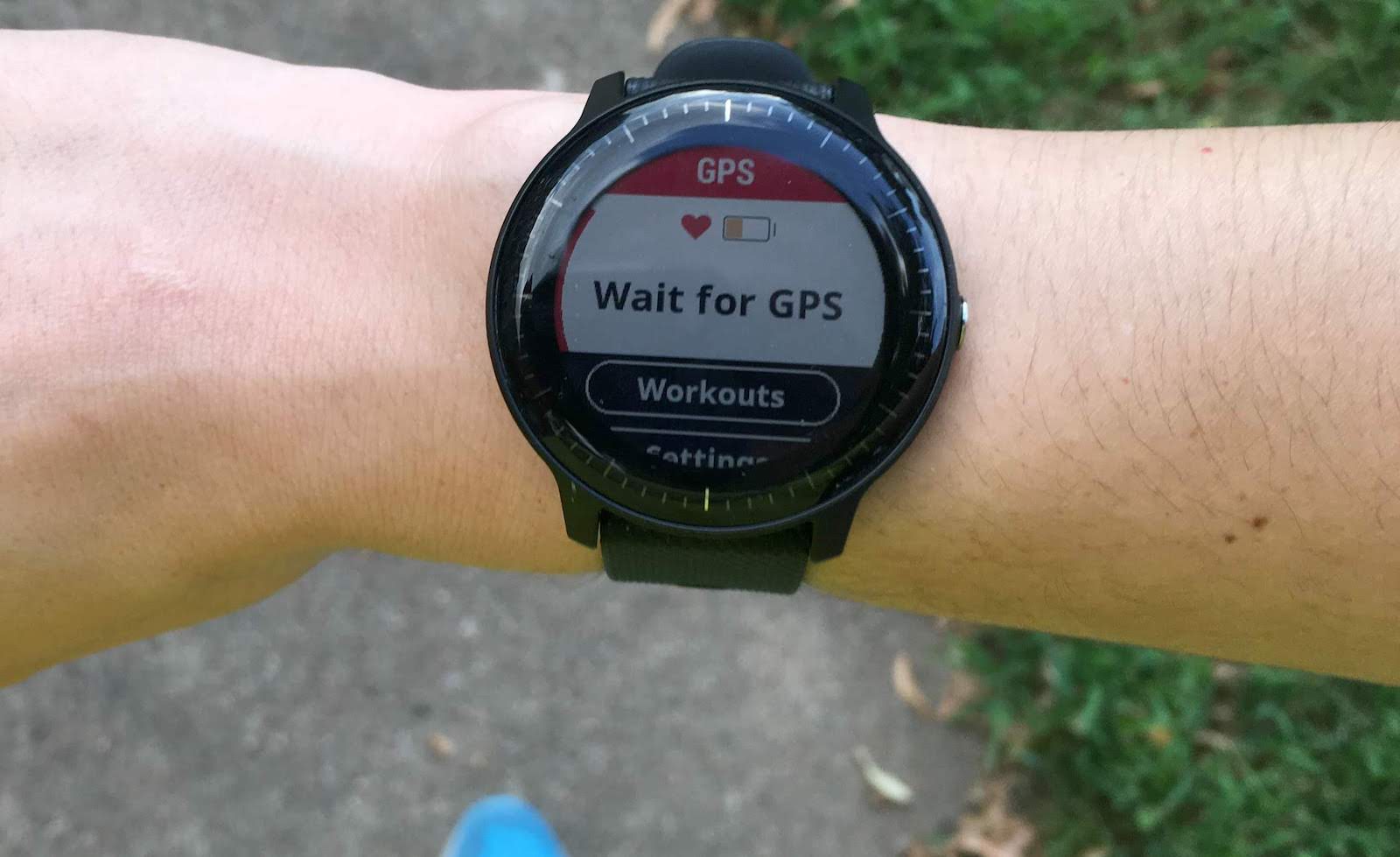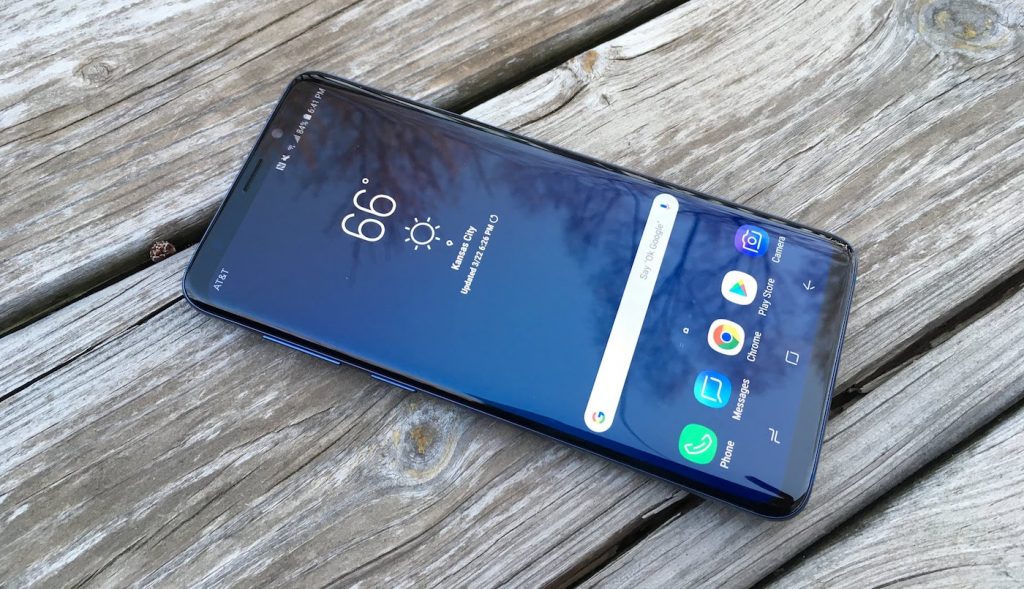This review was lightly updated in January 2020, to reflect a price drop from $299 to $249 and add a few sentences about Spotify being added to the device’s downloadable apps in Garmin’s Connect IQ Store.
Upgrading your training routine to include a smartwatch is a fantastic idea. And for those looking to make the investment for the first time, the vivoactive 3 Music is a solid option.
The good stuff | The vivoactive 3 Music has a decent battery life, it’s lightweight, and the watch face isn’t too big on thin wrists. Also, it’s easy to operate (even while running).
The bad stuff | The Music isn’t comfortable while sleeping, the list of music service options is very slim and the smartwatch itself feels a bit cheap.
For $249, the vivoactive 3 Music has great value. Its list of abilities and features includes more than 15 preloaded sport tracking modes (yoga, running, swimming, strength training, etc.), preloaded and customizable workouts, space for roughly 500 songs, Bluetooth, heart rate tracking, GPS and contactless payments with Garmin Pay — and the list keeps going from there. For the price, that’s a whole lot.
After using the vivoactive 3 Music for 6 months, I can’t imagine ever training without a smartwatch again.

Design
The vivoactive 3 Music’s case measures just over 43mm, which is the same as its predecessor (the vivoactive 3). The case is made of polymer, which seemed to hold up pretty well to my active lifestyle. The watch I’ve been reviewing looks nearly the same as the day I bought it — not a scratch in sight. And that’s despite accidentally flinging my wrist into door frames and other immovable objects.
The smartwatch’s face is made of a chemically strengthened glass and has a glossy finish. The nearly identical vivoactive 3’s face had a metallic ring around it, which looks a bit nicer but users have reported the vivoactive 3’s ring collecting scuffs more easily. The color touch display underneath the Music’s face also is easy to read in sunlight.
The Music comes with a standard 20mm quick release band which makes it easy to swap for different Garmin straps (they’re available for $30 each) or other 20mm bands. The strap that comes in the box is made of silicone and is great for sweaty workouts.
The smartwatch’s weight is only 39.0 g — that’s pretty light — and is comfortable to wear during the day. As long as the watch isn’t too loose fitting, it does a good job of getting your heart rate. At night, I found the watch to be uncomfortable — which bodes ill for those who want to track their sleep. Making the band less tight didn’t seem to help with sleep comfort.
Activity tracking
I mainly used the vivoactive 3 Music for three activities: Running (outdoors and on a treadmill), hiking and yoga. Actually, there is no pre-loaded hiking activity so I used the “walking” activity for all my hikes.
The Music proved to be a great tool for tracking all activities and for learning a lot more about how I was progressing in my training. Data points include — but are definitely not limited to — Heart Rate, HR %Max, HR Zone, Interval Distance/Pace/Time, Lap Cadence (running and cycling), Lap Speed/Time, Pace, Speed, Steps, and a whole lot more.
After your workout, you’ll want to sync your watch with your Garmin account to really dig into the data. You can sync two ways: turning on your smartphone’s Bluetooth and using the Garmin mobile app or using the data cable and plugging the watch into your computer (for this you will need to have the Garmin Express application installed).
I tended to open the Garmin app on my iPhone while stretching post workout. After syncing, an activity tile shows up at the top of your home screen on the app. Tapping it will show more in-depth information about the workout.

If you’re looking to really elevate your training for an event, head to the Garmin connect dashboard in a web browser and click the “Training Plans” tile. There you’ll find plans for running, cycling and triathlon training. The running plans start at beginner and then range from 5K to Marathon distances.
Once you choose a plan, the workouts will be plotted on your dashboard’s calendar. In the upper right corner of the calendar, there’s a settings icon and one of the dropdown options is “Send workouts to device.”
The next time you sync your vivoactive 3 Music, your workouts will be added to your smartwatch and be displayed when you begin an activity. You’ll also want to turn on the watch’s manual lap function.
My experience
Running has been my focus, so it was important to me that using the vivoactive 3 Music make a difference in my training. And honestly, training with the vivoactive 3 Music was a game changer for me. But first, it’s important that you know about my old running routine.
I used Runkeeper, an app offered on Android and iOS. It tracked my workouts using my smartphone’s GPS. And every 5 minutes during my workouts it would let me know three stats: total time, total distance and average pace. I’d been using this app since 2012.
Switching to a smartwatch seemed to make me think less about that fact that I was running. That sounds like a bad thing but I found the opposite to be true.
Not hearing stats in my ear — and not having a cord connecting my headphones to my phone — had me thinking more about form and breathing. I configured the vivoactive 3 Music to buzz once every mile and only display the pace for the mile that was just completed.
Right away, I noticed my times were a little bit faster.
Obviously, a smartwatch doesn’t make a person run faster. But where your head’s at during a workout can make a big difference.
Having quick access to start and pause tracking while running was also really nice. Unfortunately, running in a city means you get stopped at traffic lights and other obstacles so pausing quickly gave me a better feel for my time.
Garmin says the watch will last roughly seven days on a fully charged battery while in smartwatch mode, which would mean not actually using the GPS or music capabilities. My longest run with the watch was about two hours and there was plenty battery life left after. Garmin claims the watch should last up to 13 hours with the GPS. Of course, if you’re also listening to music the Bluetooth will cut into that battery life even more.
Music
Update Jan. 2020: This review was written before Garmin’s vivoactive 3 Music got the ability to install the Spotify app from the Connect IQ Store. For Spotify premium users like me, the update was a game-changer — though, not perfect. Occasionally, I notice issues with the songs (kind of like they’re skipping). It’s unclear if the issue is from the song file, internet connectivity during the download process or the watch itself.
I wish I could say more good things about the actual music capabilities of the vivoactive 3 Music. Unfortunately, I can only say that it works.
It works best if you own all your music and have a really good running playlist created — or keep your podcasts on your computer locally. The smartwatch has storage for about 500 songs. The reality is, in 2019, very few people own their music.
Instead, like many others, I’m a Spotify subscriber. So not having support for Spotify on this smartwatch was a big bummer during my testing.
Garmin actually announced in October 2018 that its Fenix 5 Plus series watches could start to download the Spotify app on the Connect IQ store. But that capability hasn’t been passed to the vivoactive 3 Music yet.
If you do own music that you want to run with, getting the tracks on this smartwatch can be done easily with the Garmin Express desktop app. And if you don’t have any music you’d like to run with, there are other options in Garmin’s Connect IQ Store: Deezer, iHeartRadio Playlist Sync, Runcasts and a few others.
To actually hear the music on the watch you will need a set of Bluetooth headphones. I used Jaybird X3 headphones and had no problems syncing with the vivoactive 3 Music. While running, the connection only ever dropped for a brief second.
Problems
My biggest issue with the vivoactive 3 Music is the lack of music services available on the smartwatch. For now, there are only two: iHeartRadio and Deezer. You can upload the music stored on your computer as well. While trying to build a running playlist from my music library, though, I realized that I don’t own a lot of the music I’ve been listening to for the past 10 years. That said, when Garmin finally brings Spotify to the Music, this watch will have so much more value.
With the vivoactive 3 Music, and with other GPS-capable smartwatches, sometimes you have to be patient. After selecting the “Run” activity, you have to wait for a bit while the watch makes a decent GPS connection. Usually, this only took a couple minutes max to connect — one time it took as long as 10 minutes. My workaround was to select the activity while still indoors. Once the watch says “ready,” you can still take some time before actually starting the activity and not lose your signal.
A few times, while it wasn’t very overcast out, my watch never hit the “ready” phase. The red line that slowly crawls over the edges of the white space indicates that a connection is being made. More than once, I started recording my activity before the “ready” appeared, when the red indicator had filled out the edges of the display and (thank goodness!) the recording was fully accurate.
In the photo below, the red signal indicator had nearly crawled over half the display (see left side).

I mentioned this earlier, but the Music is not a comfortable watch for sleep tracking. I tried for about two weeks because I’ve grown used to tracking my sleep with my Misfit Ray and didn’t want to give it up. After waking up in the middle of the night to make adjustments every night, I decided to just take the smartwatch off while sleeping.
I also didn’t wear the vivoactive 3 Music to any formal events. Because it didn’t fit in. Don’t get me wrong, the Music looks fine. But its chemically strengthened glass on the screen looks very much like plastic. And its sturdy build just doesn’t scream chic.
Recommend to a friend?
If you’re a serious athlete and you already train with a smartwatch, this watch is not for you. If you’re looking to buy a smartwatch for non-active reasons — maybe you’re more concerned with looks or being able to reply to texts on your wrist — this watch still isn’t for you.
But if you’re looking for a smartwatch to get a lot of data about the hard work you’re putting into your sport of choice, you’re not concerned about looks and you want a lot of bang for your buck, you should consider buying the vivoactive 3 Music.
Trying to choose between the vivoactive 3 and the vivoactive 3 Music, just go for the Music. It’s a difference of about $30 and you’ll get the music capabilities as well as a watch face that stands up a bit better to wear and tear.



